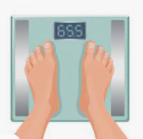Most people take on the role of family caregiver without fully knowing what to expect. These responsibilities may last for only a few weeks or may go on for many years. Sadly, the one constant variable in these situations is that the aging loved ones we care for will eventually pass away.
Some people die unexpectedly while others decline slowly over weeks, months or even years. Through close communication with a loved one’s health care team, it may be possible to obtain an estimated life expectancy. However, predicting how much time a patient has left is not an exact science.
Not knowing what to expect or how to handle new symptoms as a loved one’s health fails only magnifies the stress and anxiety a caregiver feels in an already difficult situation. Understanding some of the signs that death is near will help you prepare for this inevitability and ensure that your loved one gets the palliative care they need to manage their symptoms and remain comfortable throughout the end of life.
It is worth noting that hospice care providers are an invaluable source of hands-on help, personalized information and support for individuals who are facing a life-limiting illness. They also provide ample guidance to caregivers and other family members both during the dying process and after death.
Signs that Death Is Approaching
Certain signs and symptoms can help health care providers and family caregivers anticipate when death is near. Common end-of-life indicators are explained below along with suggestions on how to handle these changes.
- Drowsiness, Increased Sleep and/or Unresponsiveness: These symptoms are caused by changes in metabolism that occur as the body shuts down. If possible, it is best to plan visits and activities for times when your loved one is most alert. It is important to speak directly to them and talk as if they can hear, even if they are not responsive. Most patients are still able to hear even after they can no longer speak. Do not attempt to shake or rouse your loved one if they are unresponsive.
- Confusion, Restlessness, Agitation and/or Visions: Your loved one may be confused about the time, their surroundings and/or the identity of their family members. This can cause them to become restless and anxious. Hallucinations, especially of people who passed away long ago, may also occur in some patients. Gently remind them of the time, date and people who are in the room with them. If your loved one becomes agitated, do not attempt to restrain or correct them. Instead, be calm and reassuring. If their anxiety increases, contact their health care team for guidance. Medication may help minimize their confusion and agitation.
- Decreased Socialization and Withdrawal: This can be caused by decreased blood flow and oxygen to the brain and mental preparation for death. Speak to your loved one directly and let them know you are there for them. They may be aware and able to hear but increasingly unable to respond. Professionals advise that giving permission for a loved one to “let go” can be helpful. Reassure them that their life was meaningful and that their family will be okay and well-cared for in their absence.
- Reduced Appetite and/or Thirst: At the end of life, the body must conserve energy, so certain processes like digestion will slow and eventually stop. This is a difficult symptom for many family caregivers to accept because cooking and serving favorite foods is a common way of showing love and providing comfort to ill loved ones. Rather than sticking to normal meal times or pushing foods and liquids, allow your loved one to choose if and when they eat or drink. Ice chips and sips of water or juice may be refreshing if they are still able to swallow. Make sure to keep their mouth and lips moist with products like glycerin swabs and lip balm.
- Loss of Bladder or Bowel Control: Keep your loved one as clean, dry and comfortable as possible. Place disposable pads on the bed beneath them and remove incontinence briefs and pads as soon as they become soiled. Their health care team will instruct you on the best products and safest changing techniques to use.
- Darkened Urine and Decreased Urination: These symptoms are caused by significantly decreased fluid intake and reduced kidney function. In some cases, a catheter may be appropriate for preventing blockages. A member of your loved one’s health care team can provide instructions on how to take care of the catheter if one is needed.
- Cool and/or Discolored Skin: Also known as mottling, your loved one’s skin may become darker and grayish or bluish in color, especially on the underside of the body and the extremities. This is caused by decreased circulation. Although their skin may be cool to the touch, they may not actually feel cold. Blankets can be used for warmth, but avoid using electric blankets or heating pads, which can cause burns.
- Irregular Breathing Patterns and Sounds: Changes in breathing are very common. Your loved one’s breathing may become shallow, alternate between rapid and slow, and be accompanied by rattling or gurgling sounds. Changes in heart rate can accompany altered breathing patterns.
A patient may be able to breathe easier when sitting up with increased support or when lying on their side with pillows placed beneath their head and behind their back. Although labored breathing can sound very distressing, gurgling and rattling sounds usually do not cause discomfort to the patient. An external source of oxygen may benefit some patients. If your loved one is able to swallow, ice chips may also help. Placing a cool mist humidifier in their room may provide added comfort as well. - Changes in Vision: Your loved one may turn their head directly toward light sources due to a decrease in eyesight. Try to leave soft, indirect lights on in their room to avoid glare and help them see as clearly as possible.
- Increased Difficulty Controlling Pain: It is important to provide pain medications as prescribed by your loved one’s health care team. Be sure to contact their doctor if the prescribed dosage does not seem effective or if side effects become troublesome. Alternative pain management methods, such as massage, music therapy and relaxation techniques, may be used in conjunction with pharmaceuticals to minimize anxiety and discomfort.
- Changes in Muscle Function: Sudden, involuntary muscle movements called myoclonic jerks and the loss of reflexes in the legs and arms are additional signs that the end of life is near. Myoclonus is not painful, but the abrupt onset of these uncontrollable movements can be distressing. Medication may be given to minimize myoclonic jerking and improve sleep quality.
- It is important to remember that each patient’s dying experience is unique. The above physiological changes may present very obviously, they may be barely noticeable or they may be completely absent. The presence of one or more of these signs does not necessarily indicate impending death, but it is crucial to notify a member of your loved one’s health care team if you do notice any changes in their condition. A medical professional can give you more personalized information about what these changes may mean and what to expect going forward.


